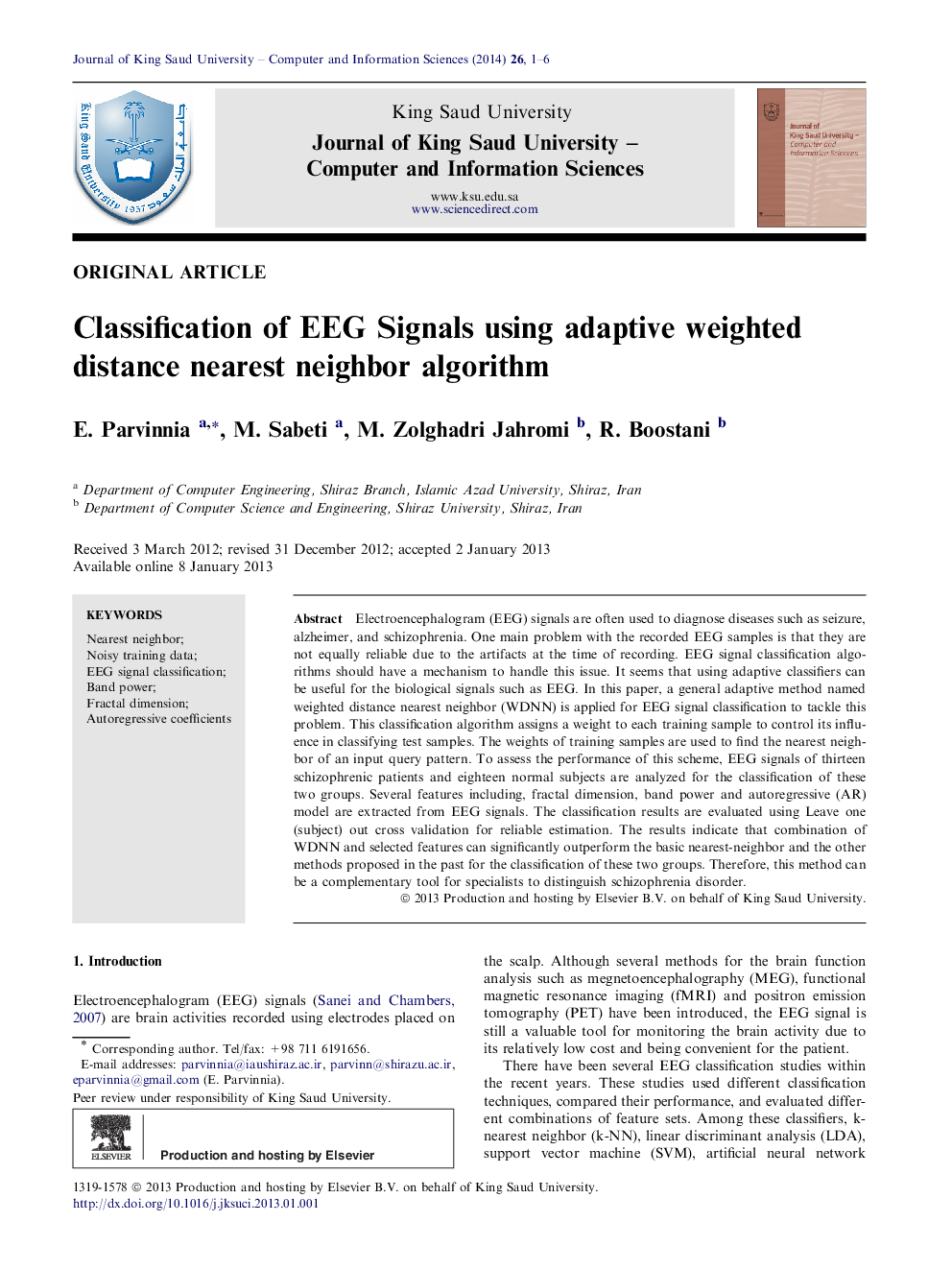| کد مقاله | کد نشریه | سال انتشار | مقاله انگلیسی | نسخه تمام متن |
|---|---|---|---|---|
| 484019 | 703131 | 2014 | 6 صفحه PDF | دانلود رایگان |

Electroencephalogram (EEG) signals are often used to diagnose diseases such as seizure, alzheimer, and schizophrenia. One main problem with the recorded EEG samples is that they are not equally reliable due to the artifacts at the time of recording. EEG signal classification algorithms should have a mechanism to handle this issue. It seems that using adaptive classifiers can be useful for the biological signals such as EEG. In this paper, a general adaptive method named weighted distance nearest neighbor (WDNN) is applied for EEG signal classification to tackle this problem. This classification algorithm assigns a weight to each training sample to control its influence in classifying test samples. The weights of training samples are used to find the nearest neighbor of an input query pattern. To assess the performance of this scheme, EEG signals of thirteen schizophrenic patients and eighteen normal subjects are analyzed for the classification of these two groups. Several features including, fractal dimension, band power and autoregressive (AR) model are extracted from EEG signals. The classification results are evaluated using Leave one (subject) out cross validation for reliable estimation. The results indicate that combination of WDNN and selected features can significantly outperform the basic nearest-neighbor and the other methods proposed in the past for the classification of these two groups. Therefore, this method can be a complementary tool for specialists to distinguish schizophrenia disorder.
Journal: Journal of King Saud University - Computer and Information Sciences - Volume 26, Issue 1, January 2014, Pages 1–6